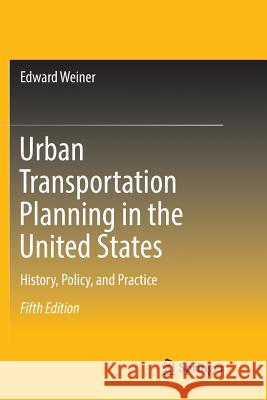Urban Transportation Planning in the United States: History, Policy, and Practice » książka
topmenu
Urban Transportation Planning in the United States: History, Policy, and Practice
ISBN-13: 9783319820064 / Angielski / Miękka / 2018 / 442 str.
Kategorie BISAC:
Wydawca:
Springer
Język:
Angielski
ISBN-13:
9783319820064
Rok wydania:
2018
Wydanie:
Softcover Repri
Ilość stron:
442
Waga:
0.63 kg
Wymiary:
23.39 x 15.6 x 2.36
Oprawa:
Miękka
Wolumenów:
01
Dodatkowe informacje:
Wydanie ilustrowane











